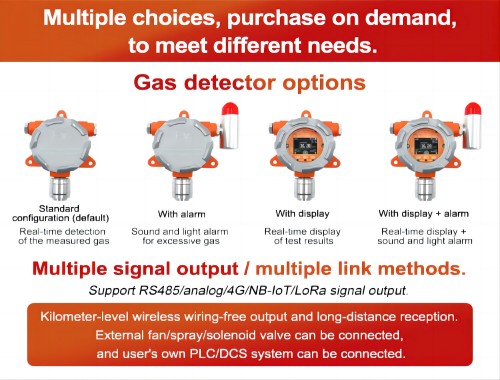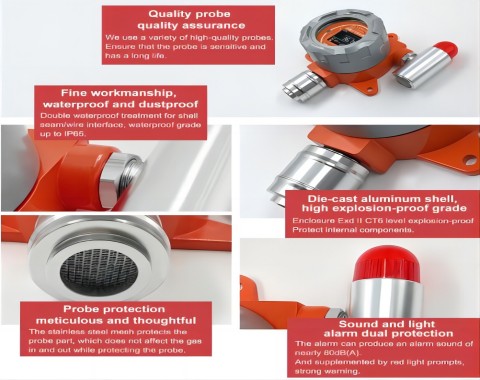Sulfur hexafluoride (SF6) sensor are instrumental in detecting and monitoring the presence of SF6 gas, a potent greenhouse gas with a high global warming potential. These sensors play a crucial role in various industrial, environmental, and safety applications, providing valuable insights into SF6 gas levels and contributing to the mitigation of environmental impact. In this essay, we will explore the advantages of SF6 sensors, highlighting their significance in environmental monitoring, industrial safety, and emissions reduction efforts.
Advantages of SF6 Sensor:
Environmental Monitoring: SF6 sensor enable precise monitoring of SF6 gas levels in the atmosphere, offering valuable data for environmental assessments and regulatory compliance. By detecting and quantifying SF6 emissions, these sensors support environmental monitoring initiatives aimed at mitigating the impact of greenhouse gases on climate change.
Emissions Reduction: The use of SF6 sensor facilitates the identification and mitigation of SF6 leaks, which can occur in various industrial processes and equipment. By promptly detecting and addressing SF6 leaks, these sensors contribute to emissions reduction efforts, supporting sustainability objectives and environmental stewardship.

Safety Assurance: SF6 sensor play a critical role in ensuring workplace safety in industries where SF6 gas is utilized, such as electrical utilities, power generation facilities, and semiconductor manufacturing. By monitoring SF6 gas levels and detecting potential leaks, these sensors help mitigate safety risks associated with SF6, including the risk of fire, explosion, and exposure to hazardous concentrations of the gas.
Equipment Protection: SF6 sensor aid in the protection of equipment and infrastructure that utilize SF6 gas, such as high-voltage electrical switchgear, circuit breakers, and transformers. By providing early detection of SF6 leaks, these sensors support preventive maintenance efforts, helping to preserve the integrity and reliability of critical assets while minimizing the risk of equipment damage.
Compliance with Regulations: In many jurisdictions, regulations and standards govern the handling, monitoring, and reporting of SF6 emissions. SF6 sensor assist industrial facilities and utilities in complying with regulatory requirements by enabling accurate monitoring of SF6 gas levels and supporting the documentation of emissions data for reporting and compliance purposes.

Data-driven Decision Making: SF6 sensor generate valuable data on gas concentrations, trends, and leak occurrences, empowering organizations to make informed decisions regarding maintenance, leak remediation, and operational practices. This data-driven approach supports proactive management of SF6 gas usage and emissions, optimizing resource utilization and minimizing environmental impact.
Remote Monitoring Capabilities: Advanced SF6 sensors may offer remote monitoring and connectivity features, allowing for real-time data access, alerts, and notifications. This capability enables proactive response to SF6 gas events, facilitates predictive maintenance, and enhances operational efficiency in managing SF6-containing equipment and facilities.
Contribution to Climate Goals: By facilitating the detection and mitigation of SF6 leaks, SF6 sensors contribute to climate goals and sustainability targets aimed at reducing greenhouse gas emissions. The data provided by these sensors supports efforts to track and reduce SF6 emissions, aligning with global initiatives to combat climate change and limit the environmental impact of SF6 gas.
Conclusion
In conclusion, SF6 sensor offer a range of advantages that are instrumental in environmental monitoring, safety assurance, emissions reduction, and regulatory compliance. These sensors play a critical role in addressing the environmental and safety challenges associated with SF6 gas, providing valuable insights and enabling proactive measures to minimize the impact of SF6 emissions. As the importance of mitigating greenhouse gas emissions continues to grow, the use of SF6 sensors is expected to play an increasingly significant role in supporting sustainable practices and environmental responsibility across various industries and applications.